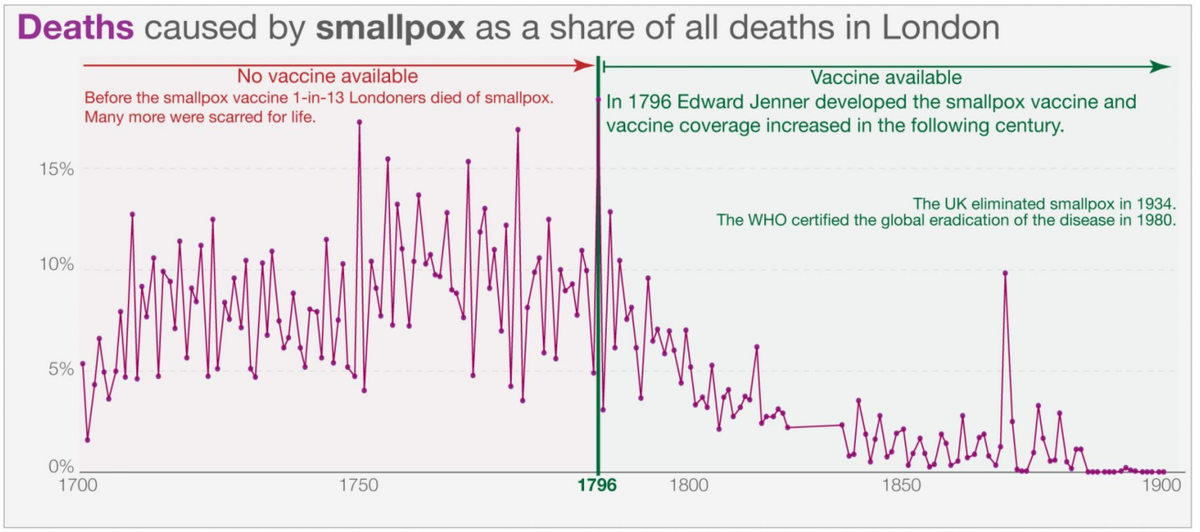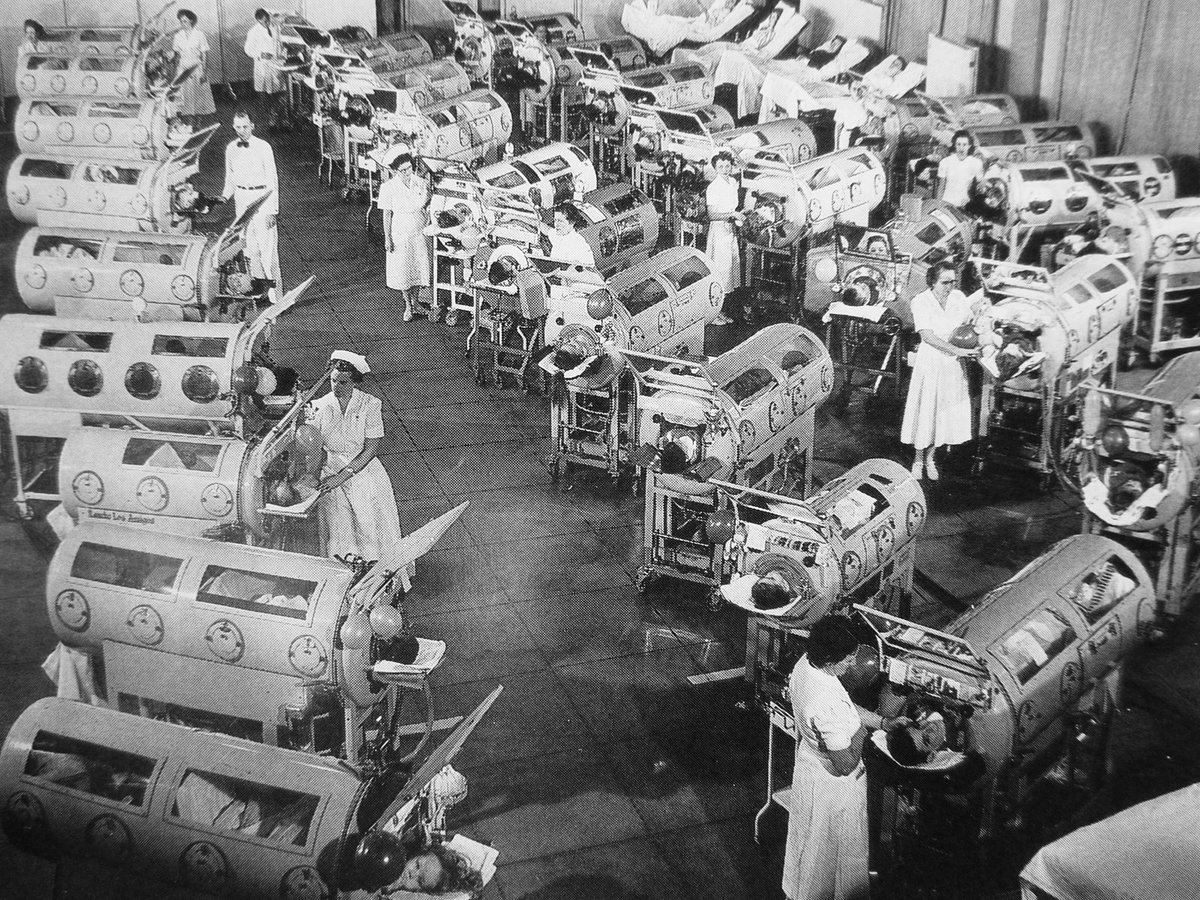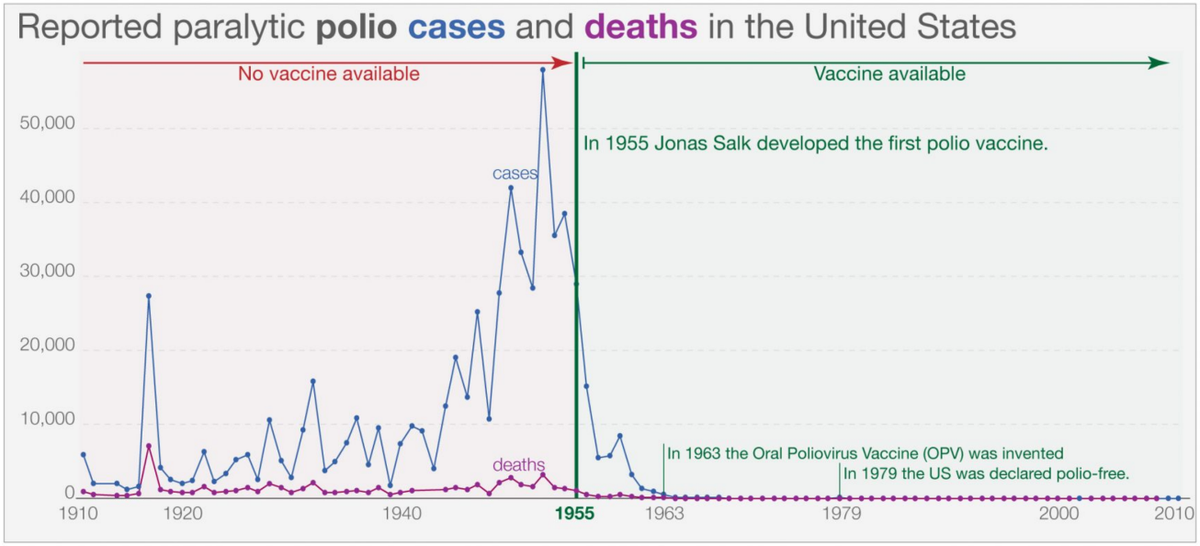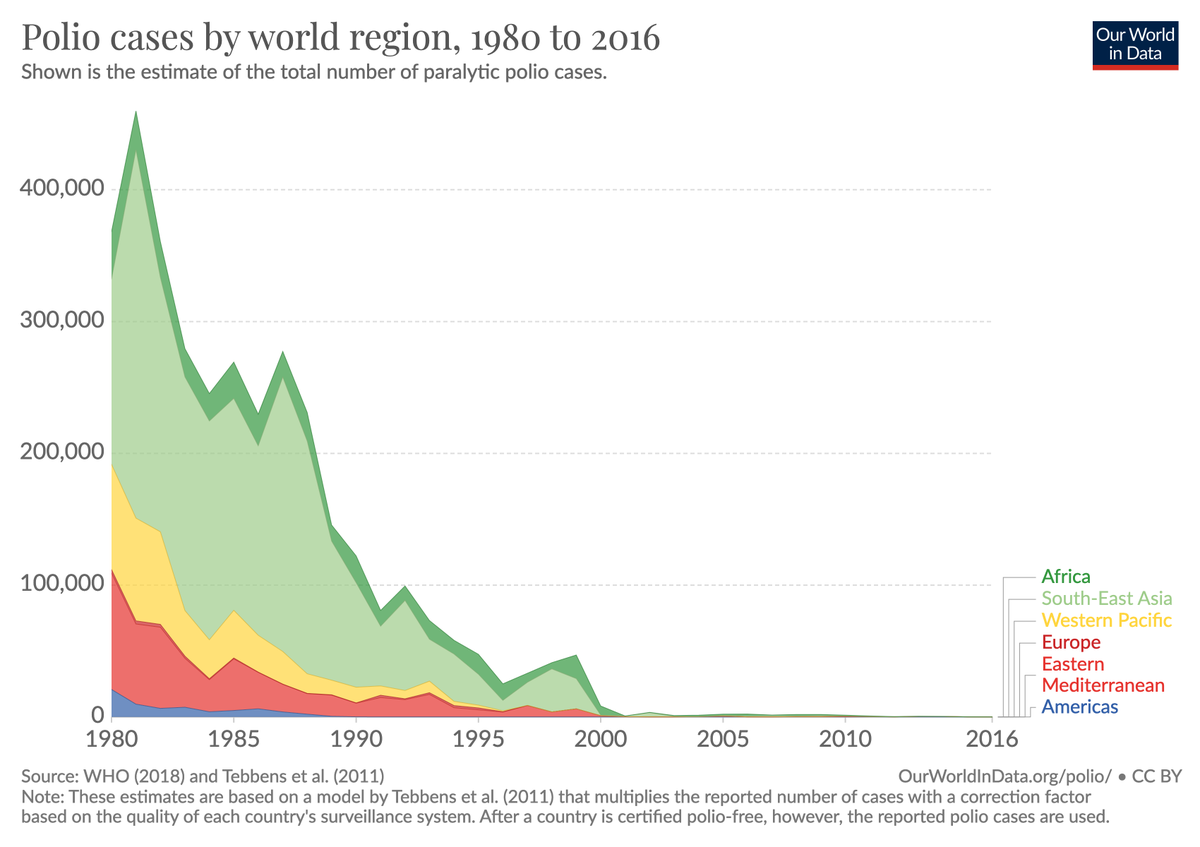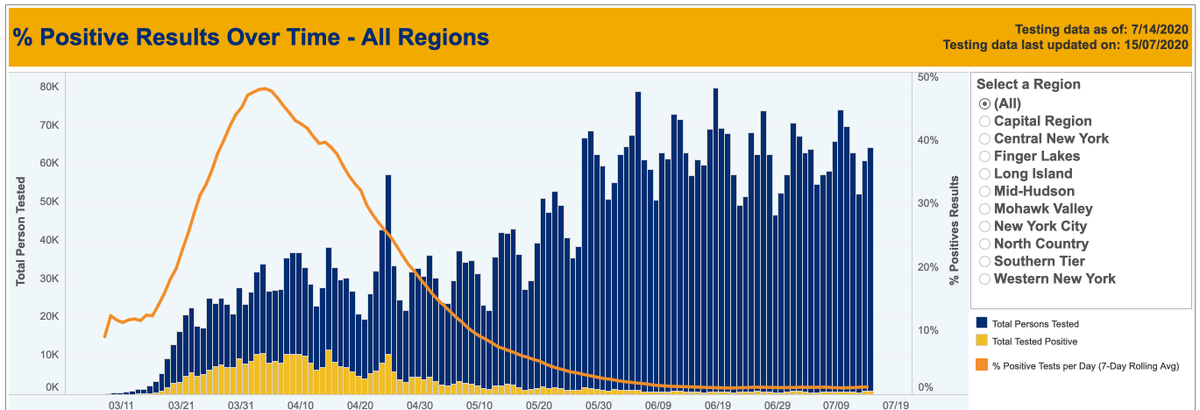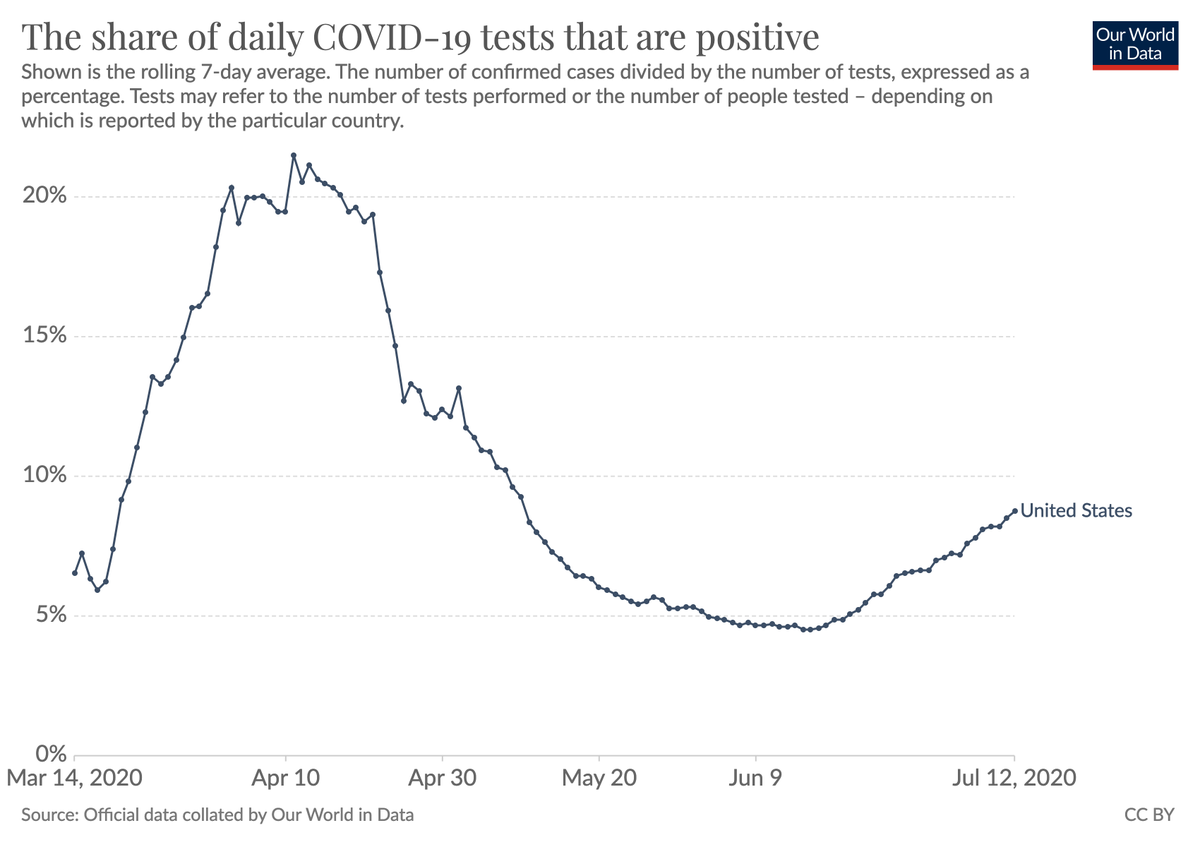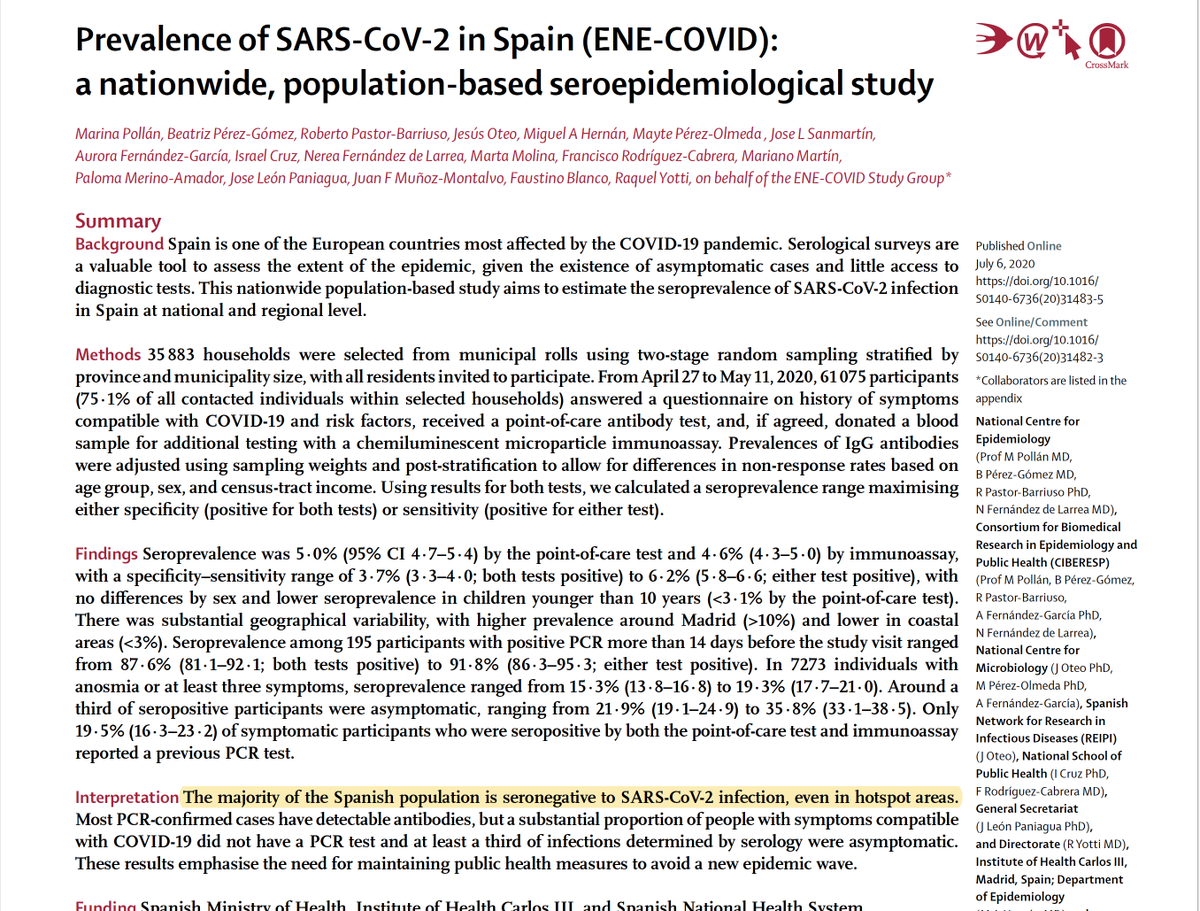My new post – and visualization – on how vaccines allowed us to make progress against recurring epidemics of infectious diseases:
OurWorldInData.org/microbes-battl…
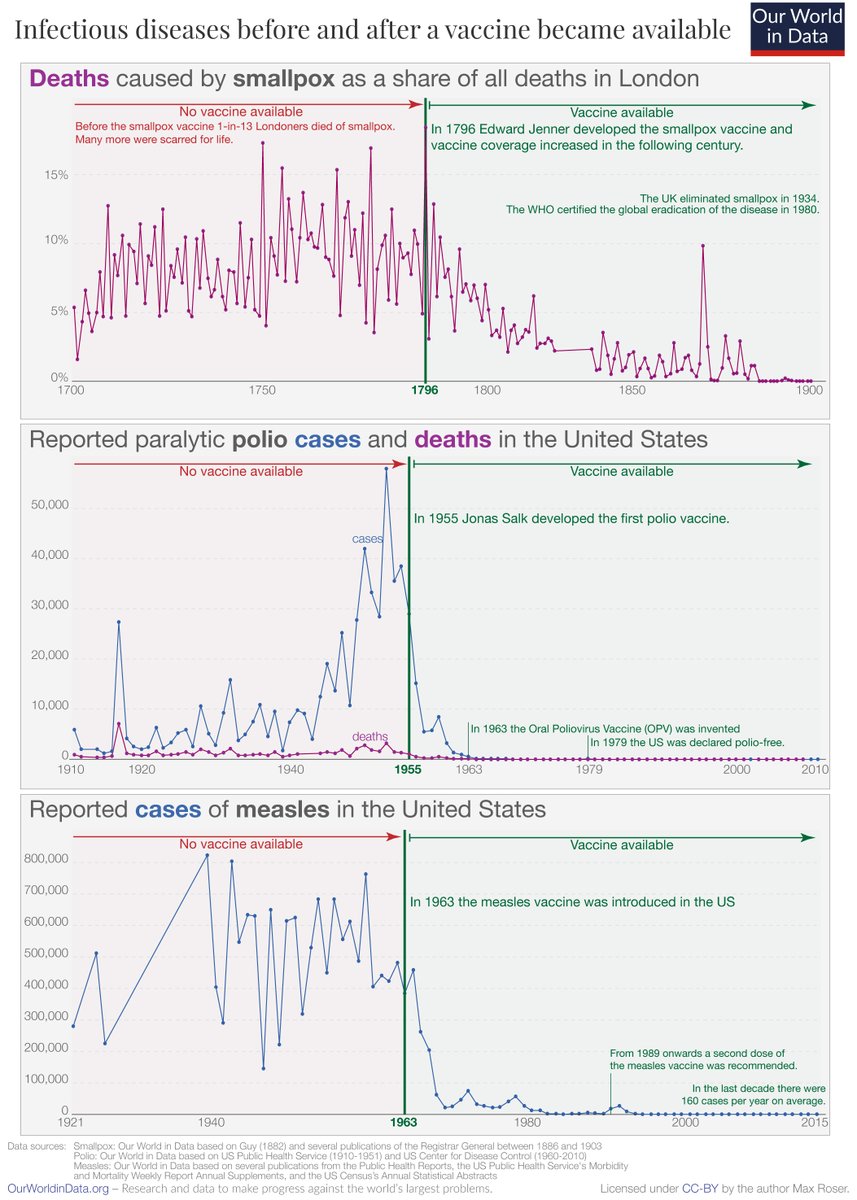
No matter where or when they were born, around half of all children died. Billions of them died from infectious diseases.
[in detail here ourworldindata.org/child-mortalit…]
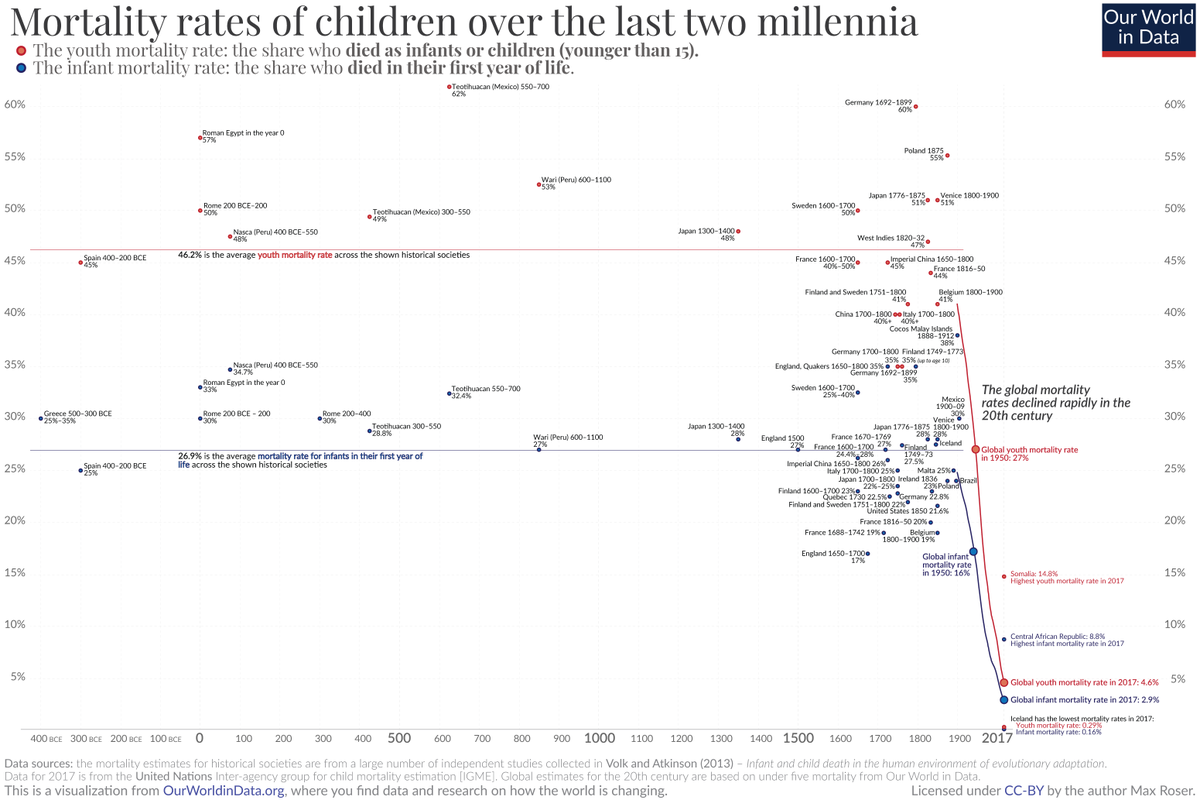
The global average is now 73 years.
[see ourworldindata.org/life-expectanc…]

The widely accepted idea was that Miasma, a form of “bad air”, causes disease. The word malaria – ‘mal aria’ ‘bad air’ in medieval Italian – remains with us today.
The germ theory of disease was a scientific breakthrough.
Not the only, but perhaps the most important technical innovation in our fight against microbes were vaccines.
Polio is an infectious disease, contracted predominantly by children, that can lead to the permanent paralysis of various body parts and ultimately death by immobilizing the patient’s breathing muscles.
When it was announced on April 12 it was celebrated as “more than a scientific achievement” according to Salk’s biographer Carter: The vaccine “was a folk victory, an occasion for pride and jubilation…
The virus can travel dozens of meters. Published estimates of the (these days much discussed) basic reproduction number (R0) – the average number of secondary cases arising from each case – range from 3.7 up to 203.
Today, 85% of one-year olds receive the vaccine and the number of deaths has fallen to 95,000 in the latest data.
We are facing a pathogen that we have no treatment for and no protection from.
Korea – ourworldindata.org/covid-exemplar…
Vietnam – ourworldindata.org/covid-exemplar…
Germany – ourworldindata.org/covid-exemplar…
Today’s results from CanSino and the University of Oxford are encouraging!
Here is my ongoing thread on it
Our best strategy in the age-old fight against the germs is our collaborative, data-based effort to study the world around us and within us. Our best strategy is science.
/end/


